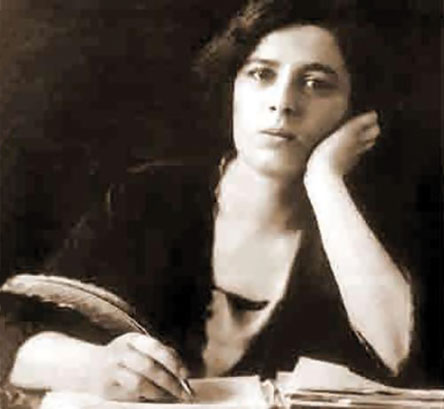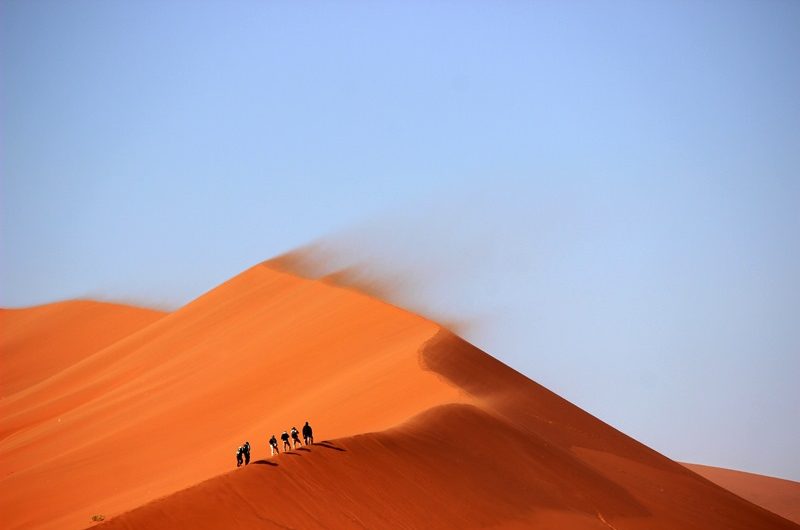Kartik
Latest posts by Kartik (see all)
- Taste The True Flavor of Ladakh On These Top Three Treks! - July 10, 2018
- Travel Goals: Why Kedarkantha Peak Is A Total Chase - May 18, 2018
- Spiritual Yatras 2018: Nanda Devi Yatra, Kailash Mansarovar Yatra - May 16, 2018
“Surely, of all the wonders of the world, the horizon is the greatest.” ― Freya Stark
This line pretty much sums up the kind of person Freya Stark was. She believed in travelling unimaginable distances, seeing endless possibilities, even when most could see none. For those of you, who don’t know who this wonderful woman was, she was a British-Italian traveller and explorer, renowned for her writings about the Middle East. Her parents are known to have been quite liberal, resulting in her knowing numerous languages as a child, even though she never went to school.
The day she turned nine, she got One Thousand and One Nights, a book of fantasy tales, more commonly known as Arabian Nights…there’s a name you might have heard of. If not the book, then characters like Aladdin, Ali Baba, Kasim and Sinbad the Sailor must definitely ring some bells. The book instantly caught the young woman’s attention, and she at once became fascinated by the mysteries and culture of the Middle East. By the time she went to college at the age of 19, she could already speak German, French and Italian fluently.

A ‘False’ Start
During WWI, she found employment as a nurse in Italy, and after the war ended, spent time learning Arabic in London. Her adventures began in 1927, when she made it to Beirut, the capital of Lebanon, as did the series of controversies and scandals, surrounding her. While in Syria that year, being the rebellious personality that she was, she intruded into a territory, held by Druze, an Islamic religious and political faction, and cordoned off by the French. So, wily as she was, she set off unnoticeably on a donkey with a Druze adherent from Damascus along a rough and relatively hidden path through the countryside. At night, they took refuge in village houses that seemed friendly.
This ‘irresponsible’ act of hers, some say, nearly led to a full-blown international conflict. Her primary aim of visiting Damascus, the Syrian capital, was to perfect her Arabic and understand the local culture, which brought forth the ire of the colonial regime.
Breaking the Taboo
She went back to London after seven months in the Middle East to learn drawing as she wanted to create maps of the places, she would explore in future. Her next voyage, again filled with its share of ‘issues,’ in 1929, saw her travel first to Damascus and from there to Baghdad. Here, she remained in close contact with the English officers posted there. She also mingled with local Iraqis and went to the Arabian Desert with them to interact with Bedouins, the famous nomads of the region. This was considered taboo by the colonial mindset, but this didn’t unnerve the feisty Stark.
…Of Alamut and Hashashins
By 1930, the explorer became well versed in Persian, and as you would have guessed, made for Persia, the modern-day Iran. The sole purpose of this venture was to find the valley of the dreaded Hashashins, infamous as highly skilled murderers. Stark went to the location of the legendary fortress of Alamut (appearing in Prince of Persia: The Sands of Time as the seat of Princess Tamina). The fortress was, in lore, mentioned as the power centre of the Hashashins.
Armed with a mosquito net and camp bed, she and her guide set out on a mule. The successful pinpointing of its location on her map got her immense recognition from the British government. She recorded this adventure in her book, The Valleys of the Assassins: and Other Persian Travels, that became an instant hit, getting her fame not only as a traveller and explorer, but also as a writer. During her time in Iran, she also reached the remote area of Luristan, becoming the first women explorer and first European to venture there.
The Call of Sheba
Five years later, she undertook another voyage, this time to Yemen, to locate the historical city of Shabwa, the capital of the Hadhramaut region. The trade of frankincense had once made Shabwa the wealthiest city on earth. On the journey, she started an affair with an Indian tycoon, who helped her reach deeper into Yemen. Sadly, she caught measles and had to be evacuated; thus, leaving her voyage unfinished. Upon getting better in England, she again went in search of Shabwa, the land of the mystical Queen of Sheba, and as described in “A Winter in Arabia”, travelled for around 22 hours on camelback in a couple of days.
Staring at the Face of Death
Another of her venturesome experiences happened in 1941 during WWII, when she was in Baghdad. In the wake of a Nazi coup, the British had ordered their daughters and wives to leave Iraq, but Freya, along with 18 other women, chose not to leave; instead, staying back at the British Embassy. The Iraqi Army had closed in on the air force base nearby, and just as the embassy door was about to be closed shut, there came Freya, sprinting through the desolate city streets. The main gate was locked, and barbed wire and sandbags were being put to thwart an intrusion.
It is not as if the scene inside the embassy was any better; uncomfortable rooms, soaring desert heat, gunfire and the nerve-wrecking sound of bombs…And even in such a nightmarish place, she gave the inmates a lecture to cheer them up. The kind of nonchalance she showed during such terrible times really intrigued me. As she knew the local language well, she chatted with the Iraqi guards, who oversaw the prisoners, even going to the extent of asking for face powder! Blimey! You have got to respect the woman’s guts.
From the Middle East to the Orient
In the 1950s, she made for Turkey to retrace the path that Alexander the Great had taken several hundred years ago. During her exploits in the country, she authored four books that for the first time in her life didn’t contain texts in the native language. In The Lycian Shore and Ionia, A Quest, she documents her journeys to the Hellenic cities in western Turkey, contrasting the glorious triumphs of ancient Greeks and their glorious cities with the almost forgotten ruins of their structures. The following decades saw her travel to Afghanistan, Himalayas, Central Asia and even China, feeding her undying love for the Orient.
The Final Chapter
Her final voyage of significance was to Afghanistan in 1968, when she was 75 years old! Her intention was to see a minaret, dating from the 12th century that had been discovered just a few decades ago. In Kabul, she spent some time, trying to find a way to get to the Minaret of Jam as it was located in the then-remote part of the country. With an informed couple she met in the city, she sped off in a 4X4 on a ride that would prove to be quite thrilling.
Her Legacy
The books she authored are as much a Romanticised description of the desert as of the people. She was, at her time, one of the very few explorers, who interacted with Middle Eastern women as most explorers, especially males, focused on local men, who even Freya talks about in detail in her writings.
With such adventures in the Gulf region under her belt, it wouldn’t be wrong to call Freya Stark the queen of the Middle East. She is not like the queens of Arabian Nights, those beautiful, slender women, wearing shining attire with a veil over their faces , but one, who went to some of the remotest parts of the region, putting forth the true picture of the locals, their culture and their plights in front of the world. This is aptly described by herself in The Valleys of Assassins: and Other Persian Travels, where she remarks,
“If I were asked to enumerate the pleasures of travel, this would be one of the greatest among them – that so often and so unexpectedly you meet the best in human nature, and seeing it so by surprise and often with a most improbable background, you come, with a sense of pleasant thankfulness, to realise how widely scattered in the world are goodness and courtesy and the love of immaterial things, fair blossoms found in every climate, on every soil.”
Age is Just a Number
Even in old age, her love for exploring the world didn’t die and at the age of 93, when most people resign themselves to their impending demise, ready to be lost into perpetual oblivion, Freya Stark was thinking of heading to Spain. Just about then, somebody asked her thoughts on death, and she replied,
“I feel about it as about the first ball, or the first meet of hounds, anxious as to whether one will get it right, and timid and inexperienced – all the feelings of youth.”
So, you see how young she felt at such an old age. For me, this is how explorers should be, ever youthful, undaunted by age, and ready to set off at the first hint of having another adventure to talk about or be talked about for. So, with that in mind, let us get a backpack, a map and loads of ideas on where to go and what to see, and head out as this is a world of endless possibilities, just like Freya Stark saw it.



